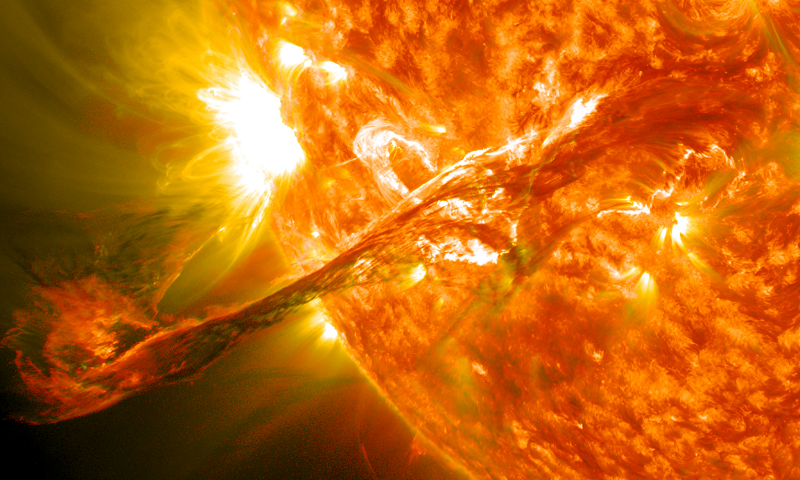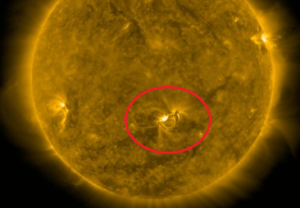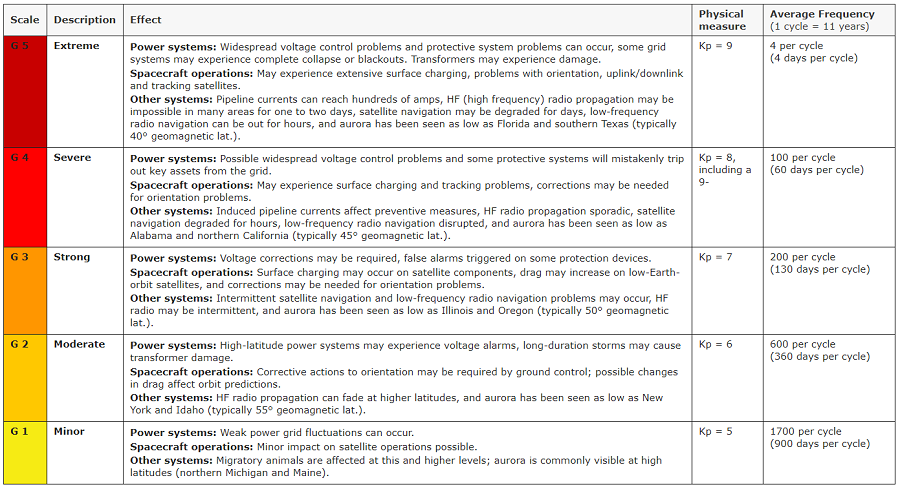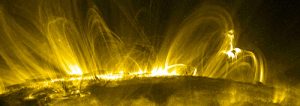
The National Weather Service’s Space Weather Prediction Center (SWPC) has upgraded the Geomagnetic Storm Watch that was in effect for today to a Geomagnetic Storm Warning after detecting the early arrival of a hearty solar wind.
The SWPC says minor to moderate geomagnetic storm levels are being observed which shows the early arrival of an anticipated coronal mass ejection that left the Sun on April 22. The enhancement in solar wind parameters were first observed by the DSCOVR spacecraft.
The transient solar wind feature is expected to cause auroral enhancements that may be visible at night in the higher latitudes under favorable sky conditions. Due to the strength of this disturbance , aurora could be visible as far south as Idaho and New York and places in between.

According to the SWPC, a partial halo Coronal Mass Ejection (CME) was associated with a C3 flare from Region 2816 on the Sun. After a thorough analysis by SWPC forecasters and computer forecast models that have skill in these types of events, the initial forecast called for impacts to arrive on Earth early to mid-day on today. Instead, however, energy was detected arriving Saturday.
Beyond this pulse of energy that is interacting with the Earth’s magnetic field now, it appears a solar tsunami was unleashed from the surface of the sun too by this CME.
A solar tsunami, also known as a Moreton Wave or a Moreton-Ramsey Wave, is the signature of a large-scale solar corona shock wave generated by solar flares. Initially spotted in the late 1950’s, technology deployed by NASA in 2009 confirmed the presence and the mechanics of such a tsunami.
Unlike a wave of water in the sense of a traditional tsunami, a solar tsunami is a wave of hot plasma and magnetism roughly 62,000 miles tall which races through the solar system at speeds of around 560,000 mph.

While this storm is considered a moderate “G2” level storm, limited impacts are expected. High-latitude power systems could experience voltage alarms; should this event last long, there could be transformer damage too. There could also be disruptions to radio communications. Ground control teams for spacecraft above Earth may also need to move or orient their equipment in space in a way to reduce the threat of damage.

While typically known for their weather forecasts, the National Oceanic and Atmospheric Administration (NOAA) and its National Weather Service (NWS) is also responsible for “space weather.” While there are private companies and other agencies that monitor and forecast space weather, the official source for alerts and warnings of the space environment is the Space Weather Prediction Center (SWPC). The SWPC is located in Boulder, Colorado and is a service center of the NWS, which is part of NOAA. The Space Weather Prediction Center is also one of nine National Centers for Environmental Prediction (NCEP) as they monitor current space weather activity 24/7, 365 days a year.